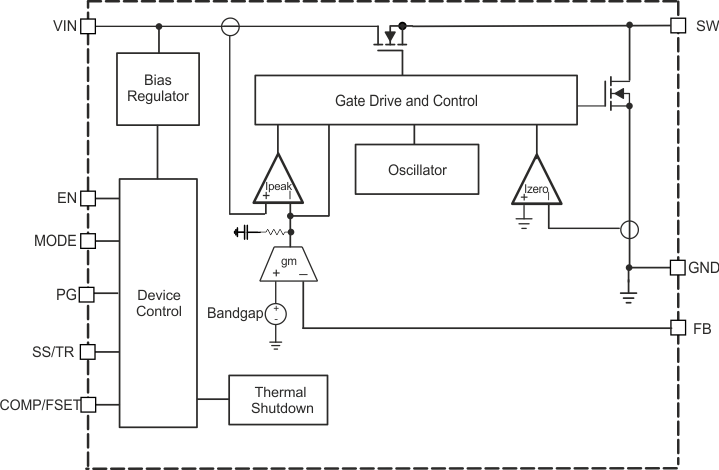-
TPS6281x-Q1 Functional Safety FIT Rate, FMD and Pin FMA SLVAEJ5C February 2020 – December 2020 TPS62810-Q1 , TPS62811-Q1 , TPS62812-Q1 , TPS62813-Q1
-
TPS6281x-Q1 Functional Safety FIT Rate, FMD and Pin FMA
FUNCTIONAL SAFETY FIT RATE, FMD AND PIN-FMA
TPS6281x-Q1 Functional Safety FIT Rate, FMD and Pin FMA
1 Overview
This document contains information for TPS62810-Q1, TPS62811-Q1, TPS62812-Q1, TPS62813-Q1 (VQFN package) to aid in a functional safety system design. Information provided are:
- Functional Safety Failure In Time (FIT) rates of the semiconductor component estimated by the application of industry reliability standards.
- Component failure modes and their distribution (FMD) based on the primary function of the device.
- Pin failure mode analysis (Pin FMA).
Figure 1-1 shows the device functional block diagram for reference.
 Figure 1-1 Functional Block Diagram
Figure 1-1 Functional Block DiagramTPS6281x-Q1 was developed using a quality-managed development process, but was not developed in accordance with the IEC 61508 or ISO 26262 standards.